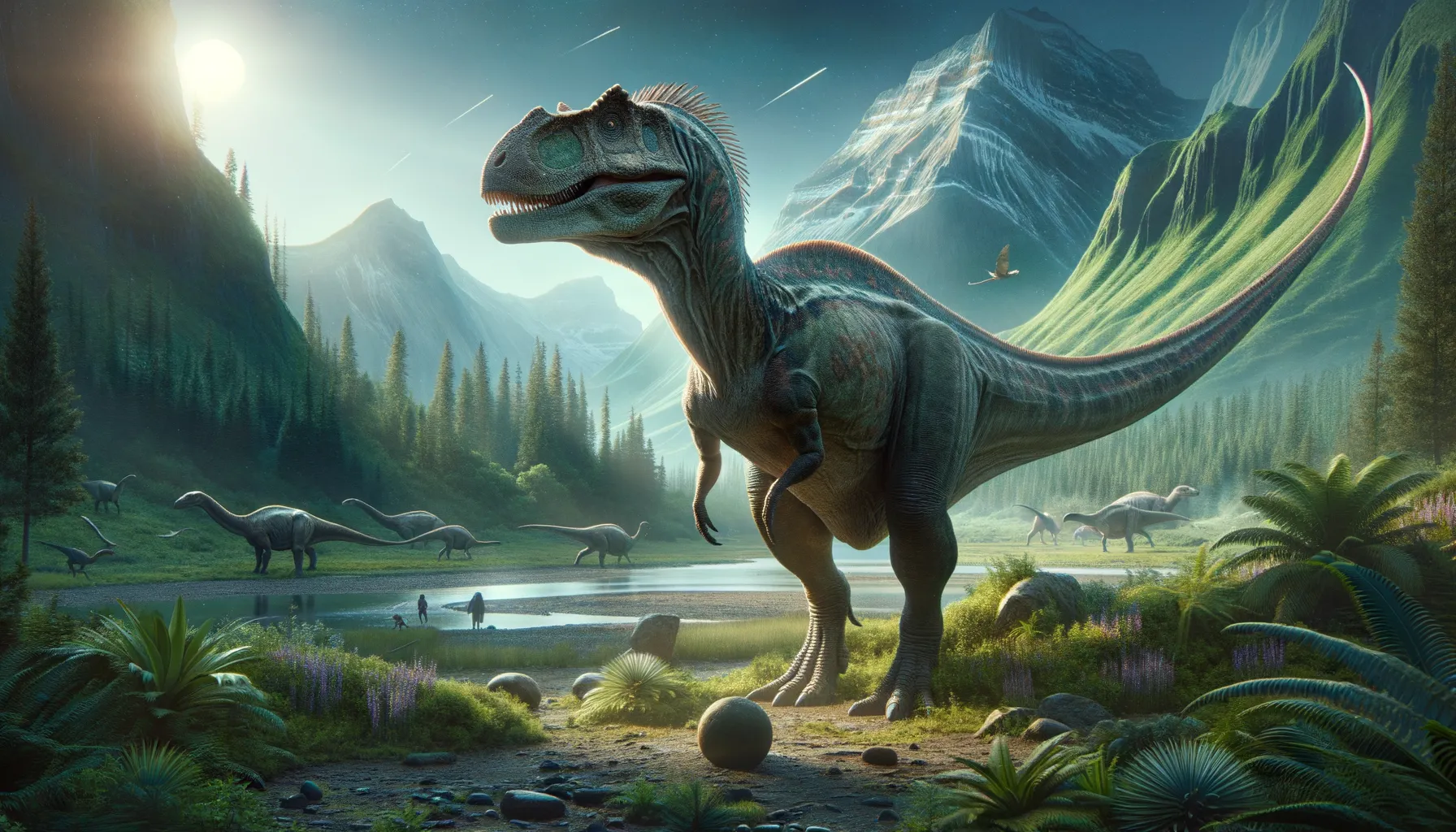
Bagualosaurus
Pioneer herbivore of the Triassic dawn.
Period
Triassic
Length
About 2.5 to 3 meters long.
Height
Approximately 2 meters at the hips.
Weight
Estimated at around 300 kilograms.
Bagualosaurus was an early dinosaur from the Triassic period, notable for its transitionary features between early dinosaurs and later sauropodomorphs. Its fossils were first discovered in Brazil, providing crucial insights into the evolution of herbivorous dinosaurs. The dinosaur showcased traits that were adapted for both bipedal and quadrupedal locomotion, allowing it to exploit diverse ecological niches.
Diet
Bagualosaurus was primarily herbivorous, feeding on plants and vegetation available at the time. Its dentition suggests it was well-equipped to chew tough plant material.
Hunting
Being herbivorous, Bagualosaurus did not hunt. Instead, it foraged for various types of vegetation. Its teeth were adapted more for processing plant matter rather than hunting prey.
Environmental challenges
During the Triassic period, Bagualosaurus had to adapt to a rapidly changing environment. The climate was generally warm, but fluctuating conditions could have affected the availability of food sources. It also lived in a landscape experiencing significant diversification of flora, requiring adaptable feeding strategies. Furthermore, Bagualosaurus faced competition from other herbivorous dinosaurs and needed to find ecological niches that ensured its survival.
Speed
Likely slow-moving due to its size.
Lifespan
Estimated moderate for dinosaurs, about 20–30 years.
First discovery
Discovered in 2007 in the Rio Grande do Sul, Brazil.
Fun Facts
- Bagualosaurus was a dinosaur from the Late Triassic period, part of a group called sauropodomorphs which later included the giant long-necked dinosaurs.
- It lived approximately 230 million years ago in what is now Brazil, highlighting the diverse and ancient history of South America.
- Despite its name meaning 'sturdy lizard', Bagualosaurus was relatively small, measuring around 8 to 12 feet long.
- Bagualosaurus likely walked on two legs but could have used all four when needed, showing early experimentation in dinosaur locomotion.
- This dinosaur was an herbivore, feeding on plants and possibly helping to shape the ecosystem by spreading seeds and altering vegetation.
- Bagualosaurus adds to the understanding of how dinosaurs began to dominate the land during the Mesozoic era.
- The discovery of Bagualosaurus fossils helps scientists piece together the puzzle of dinosaur evolution and how different species adapted to their environments.
Growth and Development
Bagualosaurus likely experienced significant growth after hatching, rapidly increasing in size to avoid predation. It probably followed a growth pattern that balanced energy expenditure with the need for swift development in a competitive environment. The development of locomotion capabilities might have occurred in phases, allowing it to move adeptly between bipedal and quadrupedal stances as it matured.
Habitat
Bagualosaurus inhabited regions that are today part of Brazil, which during the Triassic were likely dominated by open, dry landscapes interspersed with patches of vegetation. This environment was conducive to supporting diverse herbivorous populations. The availability of plant life allowed Bagualosaurus to forage effectively, while the open spaces provided ample room for movement and escape from predators.
Interaction with other species
Being among the earlier of herbivorous dinosaurs, Bagualosaurus likely coexisted with other basal dinosaur and non-dinosaur species. Competition for resources would have been an everyday challenge, influencing its foraging patterns. Its relationships with other species, predator or prey, shaped its evolution and behavior within its ecosystem.
Natural lifespan
Its lifespan likely ranged from 20 to 30 years.
Reproduction
Bagualosaurus, like many early dinosaurs, likely reproduced by laying eggs. The reproductive strategy would have focused on producing multiple offspring to increase chances of survival. Nesting behaviors and parenting post-laying are speculative but may have involved minimal parental care post-hatching.
Social behaviour
Social behavior of Bagualosaurus is not well-documented, but like many herbivorous dinosaurs, it possibly lived in groups to offer protection against predators. Herding could have been a strategy to increase foraging efficiency and offspring survival.
Fossil locations
Fossils of Bagualosaurus have been predominantly discovered in the region of Rio Grande do Sul in Brazil. This discovery contributed significantly to understanding the distribution of early dinosaurs. The locality is part of fossil-rich formations, providing critical context for early dinosaur evolution within the continental climate of Triassic Gondwana.
